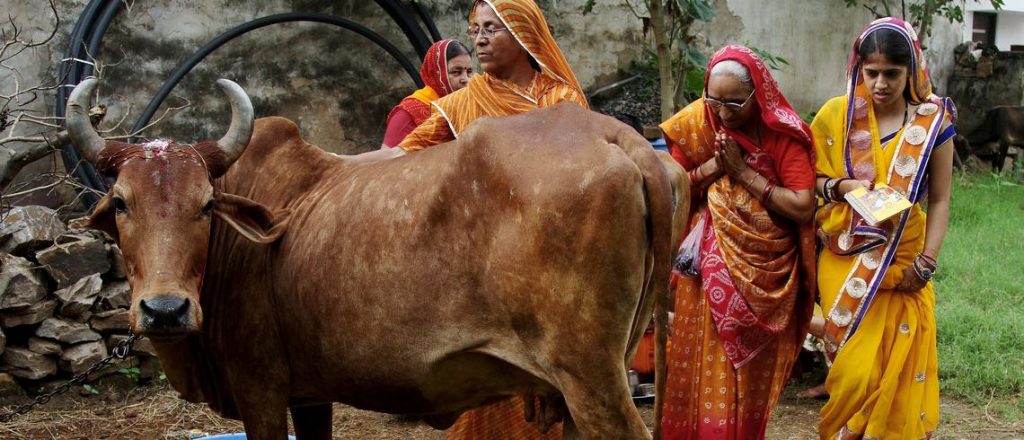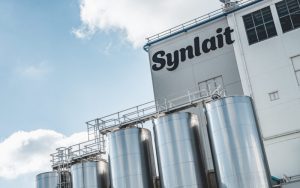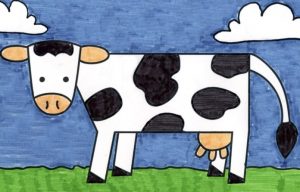The Indian government’s crackdown on cattle smuggling through the intermittently porous India-Bangladesh border, has hugely boosted the industry in Bangladesh.
From farming and breeding to the fattening of cows and milk production, the industry has grown in Bangladesh, while the handlers on the Indian side of the border, mostly struggling jobless men, have slipped into penury.
Bangladesh has witnessed a steady GDP rise over the last 20 years, with an eight percent growth in 2019. The financial growth has increased the purchasing power of Bangladeshi people, which in turn has added to their protein intake, as most people can afford to buy beef and milk products.
“More than half a dozen milk processors are processing about 10 lakh (one million) liters of fresh milk daily, which is more than double the amount they could process a decade ago,” noted a 2019 United Nations Industrial Development Organisation (UNIDO) report.
“Regarding beef production (in 2018), the government for the first time declared self-sufficiency in meat production with a production of 7.26 million Metric Ton (MT) against 7.21 million MT of demand,” it noted.
India and Bangladesh share the world’s fifth longest border, dotted with gaps which were used to traffic cattle from India to Bangladesh.
Cows are considered sacred by Hindus and worshipped as ‘divine mother’ in India. The ruling Hindu nationalist Bharatiya Janata Party opposed the informal trade, accentuating a supply shortage in Bangladesh a few years ago.
Eventually the crackdown has boosted cow farming in Bangladesh.
“The demand was so big that at times the border guards were compelled to turn an informal trade to a formal one, charging taxes locally,” said Professor Atiur Rahman, former governor of the central bank of Bangladesh.
Drop in cow movement across border
“Usually cattle are transported via land during winter – like now – when the land is covered with fog. River route is used when fog cover is not there,” explained a 30 year old farmer Md Jahangir Alam.
Alam lives in one of the many points – Narayanpur Char in north Bangladesh – used to slip in cattle from the Assam province of India to Bangladesh.
The cattle are pushed into the river Brahmaputra in India on the upstream. They are then received at various points in and around Narayanpur, and delivered to the farmers who sell it to the trader.
The volume of trade was huge and cattle were collected from north and west Indian states and assembled in the east to push through points like Narayanpur. A healthy cow may cost between $200-$400 in India and sold upwards for $1000 in Bangladesh, making the ‘business’ hugely profitable.
UNIDO noted that Bangladesh obtains about “20 percent of total beef-cattle supply” through informal cross border trade.
The percentage was about 35, according to Bangladesh Meat Merchants’ Association.
“Every house in the char (flood plains) has one or two cows; earlier they used to be Indians, now they are Bangladeshis,” Alam said.
The number of Indian cows dropped from about four million (35 percent) a year to 500,000, noted Robiul Alam, secretary general of Meat Association.
“This gap cannot be met overnight and thus an enormous market exists, which is drawing investment from textile behemoths in the dairy or meat business,” said Robiul Alam.
The drop in supply has pushed the price of a kilogram of beef in the retail market from 400 Bangladeshi Taka ($4.7) to 600 ($7).
Dr H M Salim, Assistant Director of the Department of Livestock Services, has a different argument for price escalation.
“Plenty of meat is being used to prepare fast food leaving a gap between demand and supply in the retail market,” Mr Salim said.
Farming is up
But even if beef consumption has dropped a little, cattle farms have swelled from 33,000 in 2011, to over 500,000” in 2017.
Mir Kashem Ali of Marsh Agro in Faridpur, in south-central Bangladesh, owns one such farm.
“I had 10 cows two years ago and have 18 now,” he said.
A milk trader, Ali used to sell about 100 litres of milk daily to sweetmeat shops, but launched his brand – Purity – and enhanced the production, while selling raw meat at the same time.
Bangladesh witnessed a huge spike in milk production from 7.3 million MTs annually in 2016-17, to 10 million MTs in 2018, noted Bangladesh Department of Livestock Services, while the population grew marginally in the same period.
“The ban on cow transport is a blessing in disguise. It has helped domestic production to grow rapidly,” said Shah Emran, general secretary of Bangladesh Dairy Farmers’ association.
The perception about the cow farmers have changed.
“Bangladesh produces about two million educated people each year. They are joining the cow farming and meat processing business, earlier controlled by the rural poor; it would not have been possible without a consistent growth and ban on supply,” Mr Emran said.
The former governor of the Bangladesh bank, Mr Rahman, said that the employment sector was not as badly hit as in India during COVID-19 as “the rural economy is thriving largely owing to creation of small labour intensive farms in the countryside.”
The spike in livestock trade is not just driven by the ban but by the country’s overall resource generation which is likely to propel Bangladesh out of the UN’s least developed country category in 2024.
From Cox Bazar in the extreme south east of Bangladesh to the capital Dhaka, the economic vibrancy is inescapable.
The growth has resulted in large-scale microfinancing of the farm sector.
One of the top five microfinance companies BURO Bangladesh has recorded a huge rise in loans given to livestock farmers from $ 8.8 million in 2017 to $ 21 million in 2019.
“Importantly, the recovery is among the highest compared to other sectors – 99 percent,” said Mosharraf Hossain, finance director of BURO Bangladesh.
The cattle trade – though illegal – is huge in India and as yet continuing.
The cost of a cow – depending on size – is usually between $100-$400 in India and upwards of $1000 in Bangladesh making the trade supremely profitable.
“The border area of Bengal is poor and the people are dependent on informal trade. As that option has succumbed, incidents of petty crime are being reported,” said Farukh Molla of Tegharia Institute for Social Movement, an NGO in a bordering south Bengal district.
Kirity Roy of another NGO, MASUM, that has done extensive work in the border areas, however, differs.
“The illegal trade is back again,” he said
It may not be as big as it used to be 10 years ago, but a recent surge is being noticed, he said.
“It is difficult to stop it when there is a supply and a demand,” Mr Roy said.
He blamed the border guards of both countries for a fresh lease to the million dollar illegal trade between Bangladesh and India, which is run by the Hindus and the Muslims together.
However, the Bangladesh government is very keen to stop the trade, said Dr Salim.
“Our internal market has grown and we cannot damage it anymore by allowing the Indian bovine,” the officer said.
The Meat Merchants’ Association has also approached the Prime Minister’s office to stop the entry of Indian cows to the growing Bangladeshi market.

















